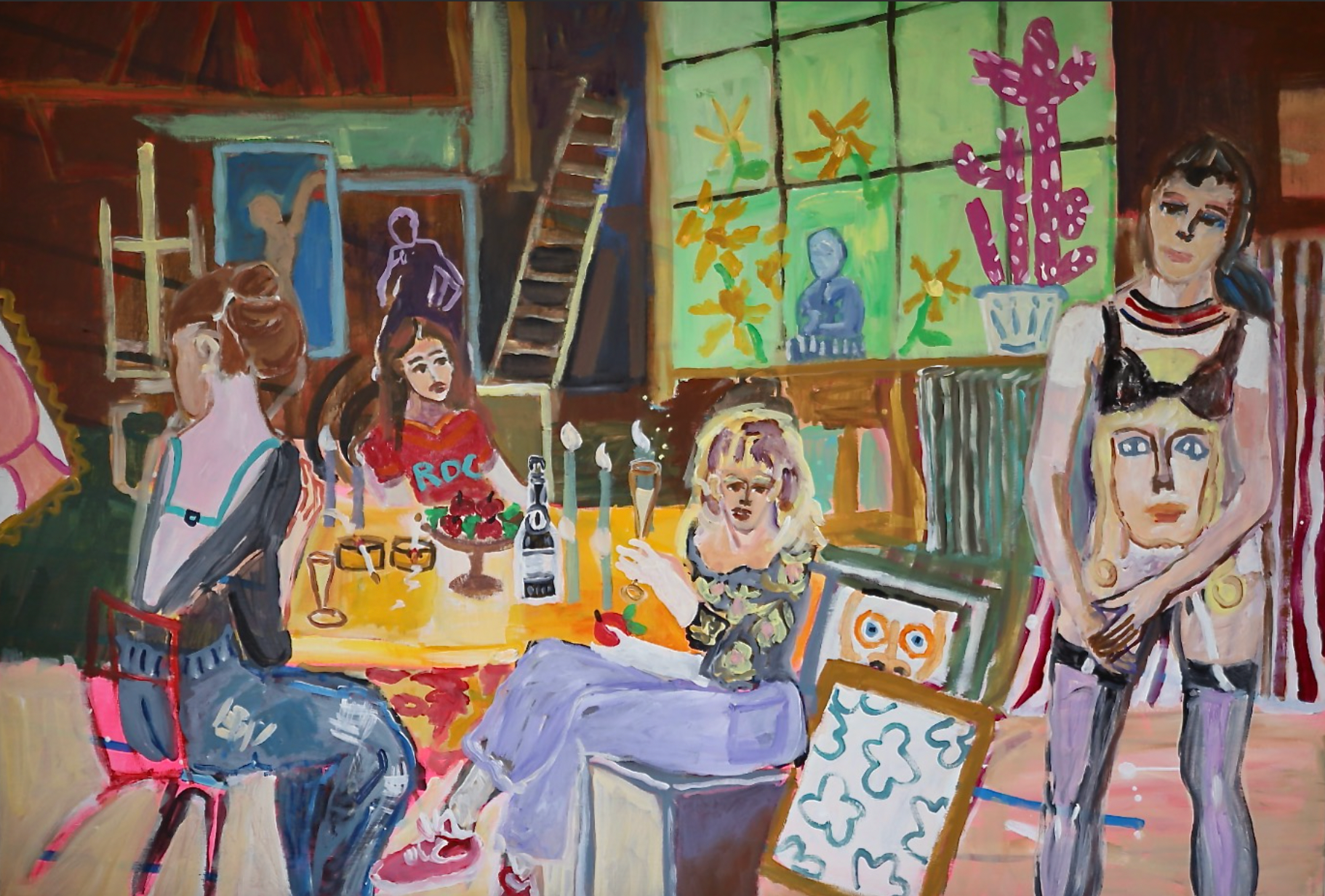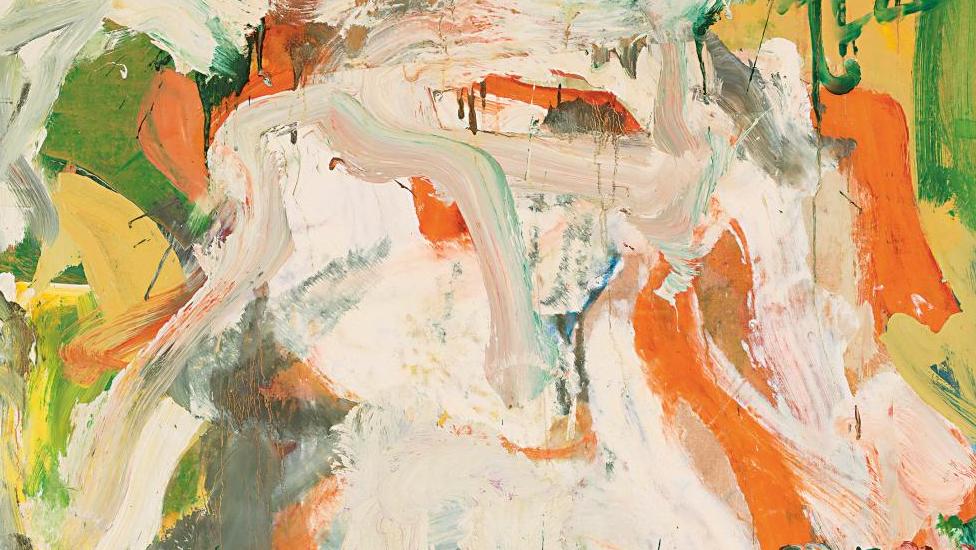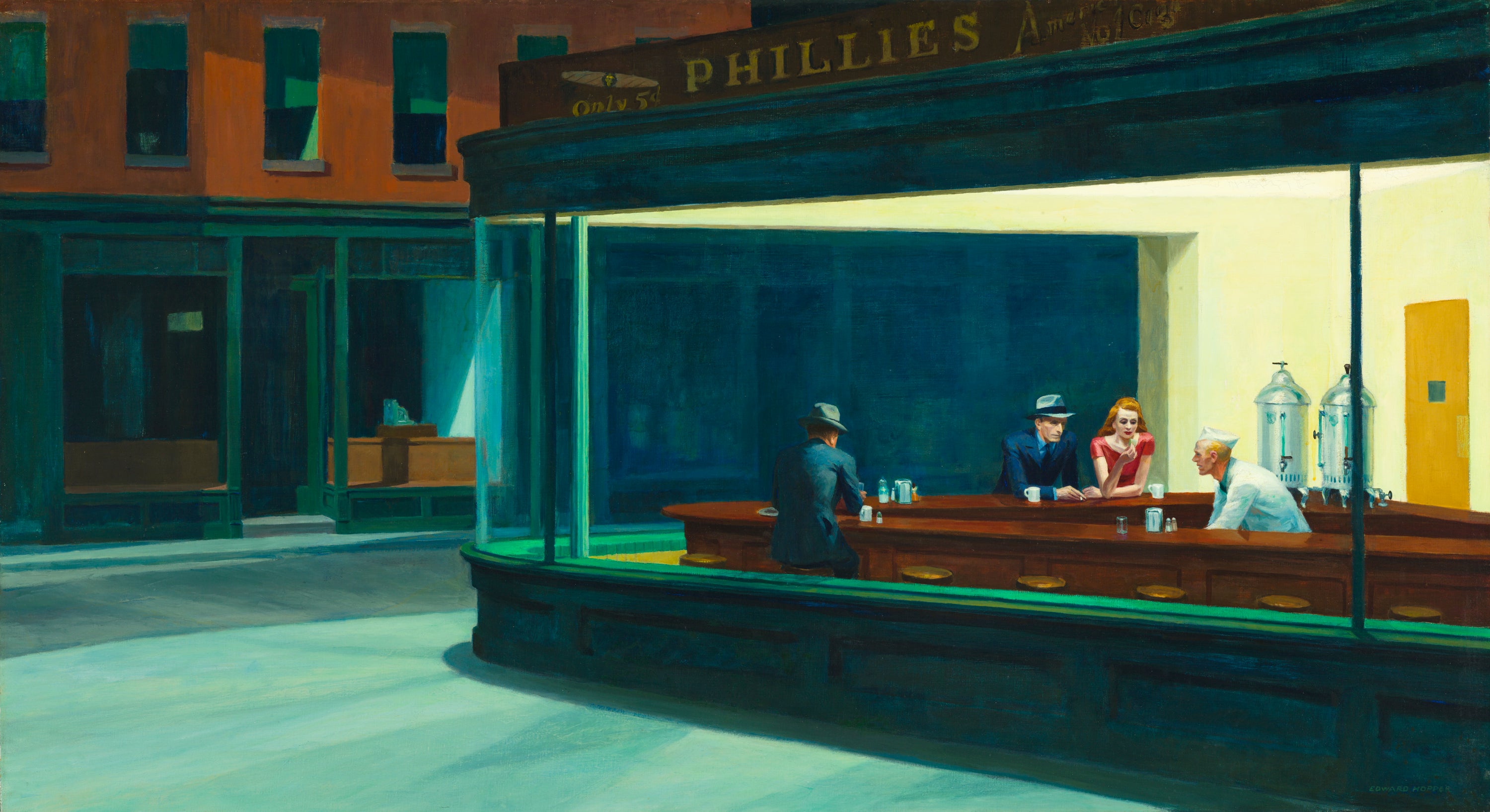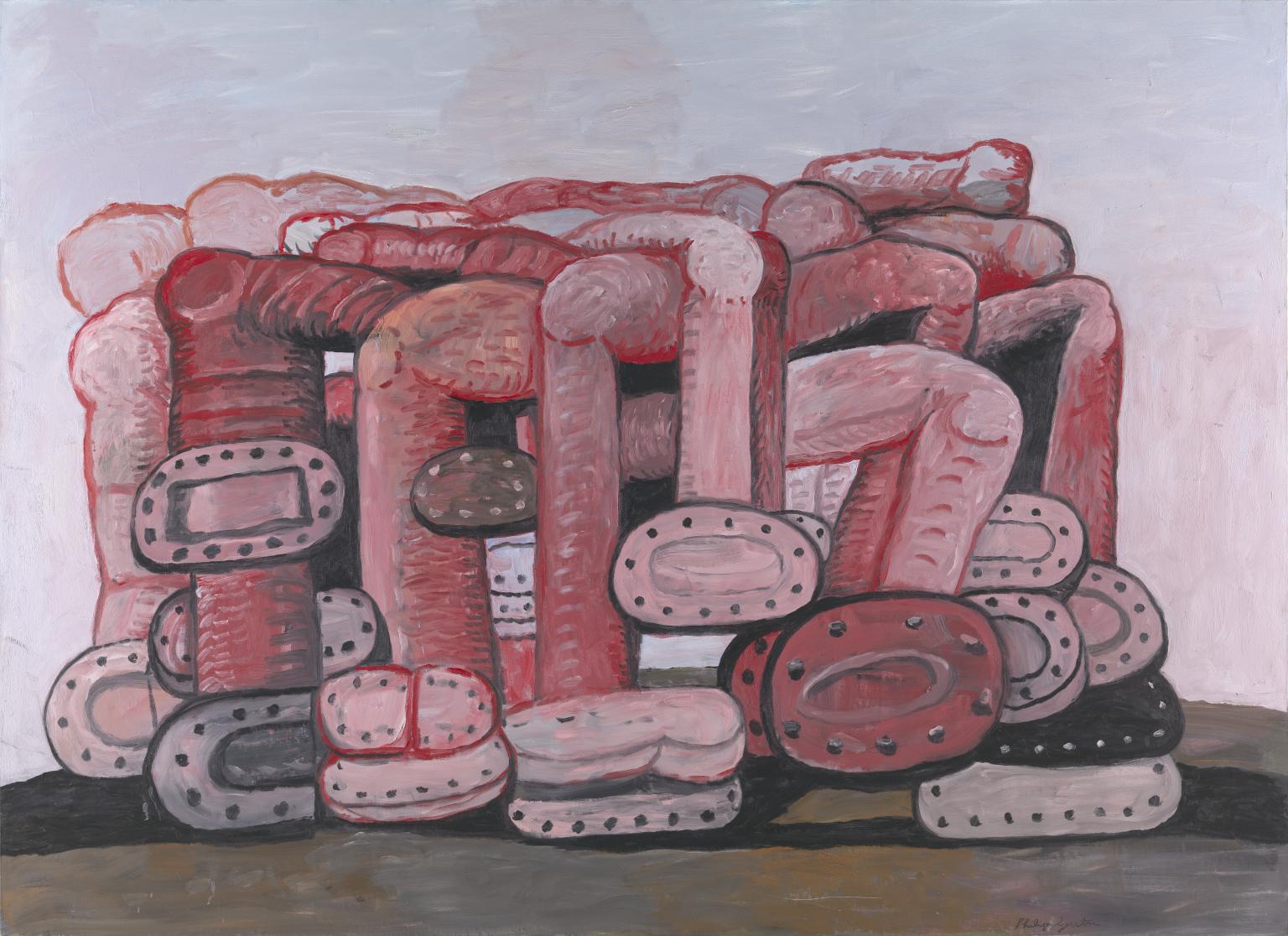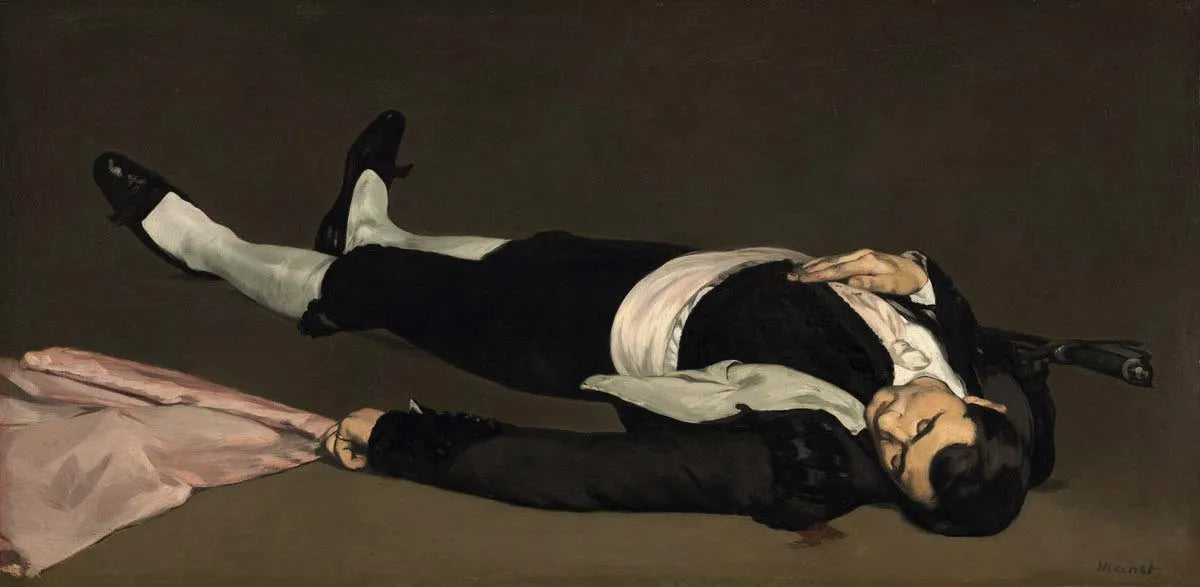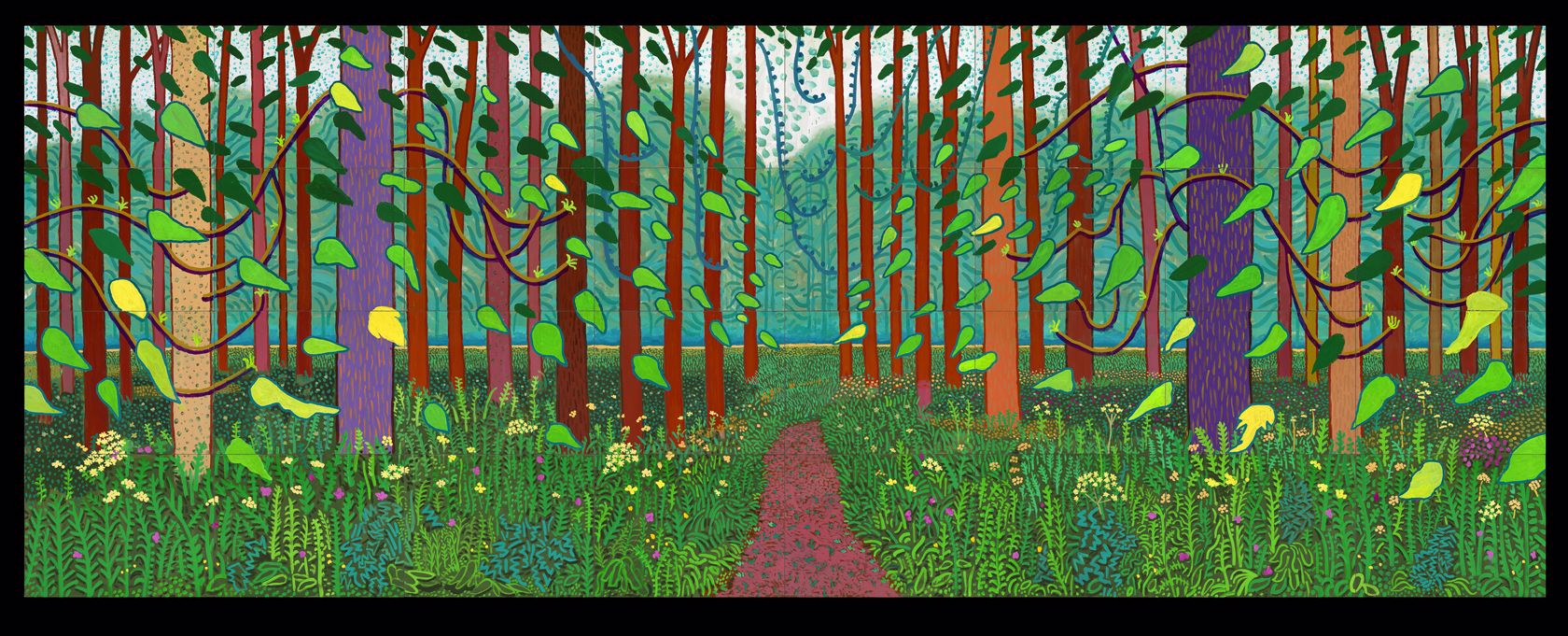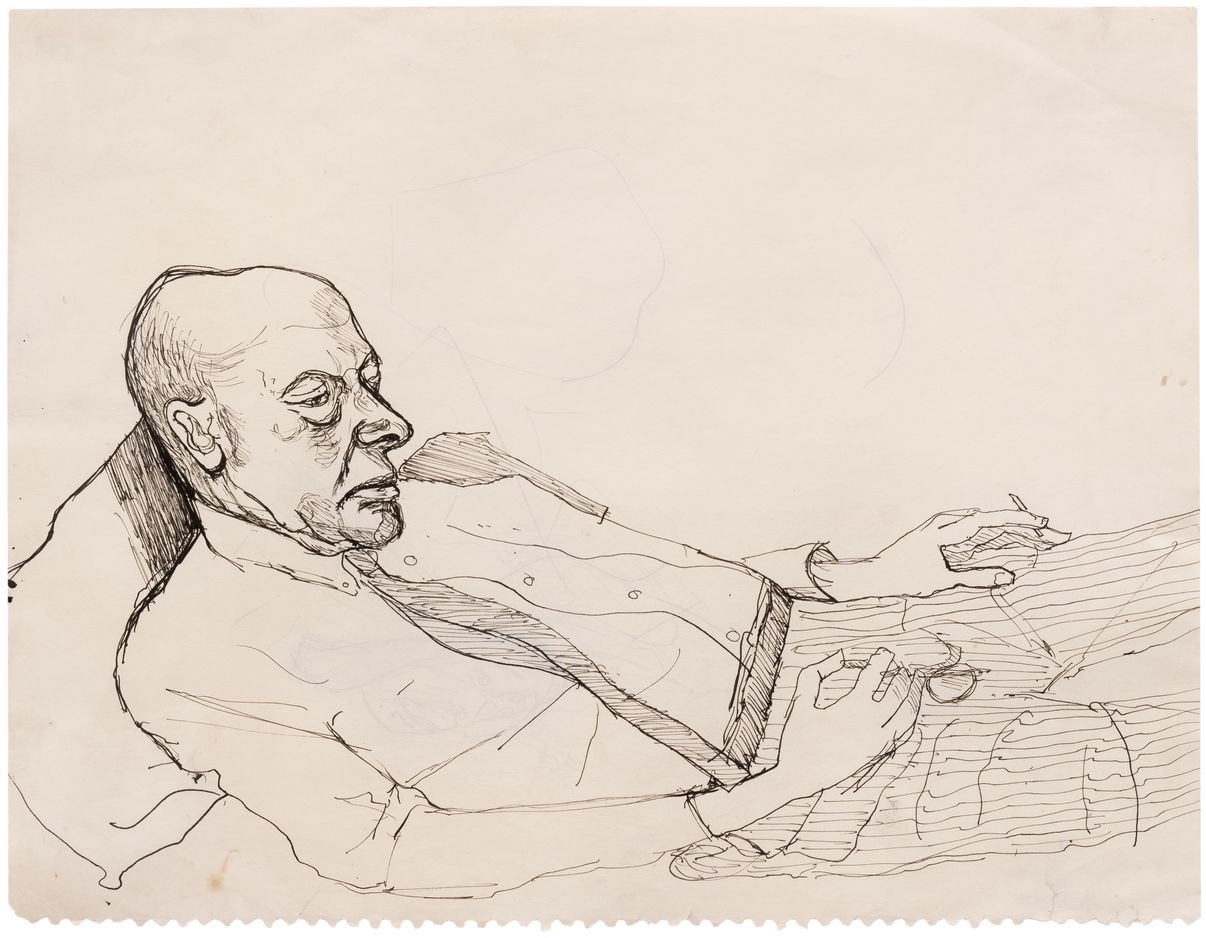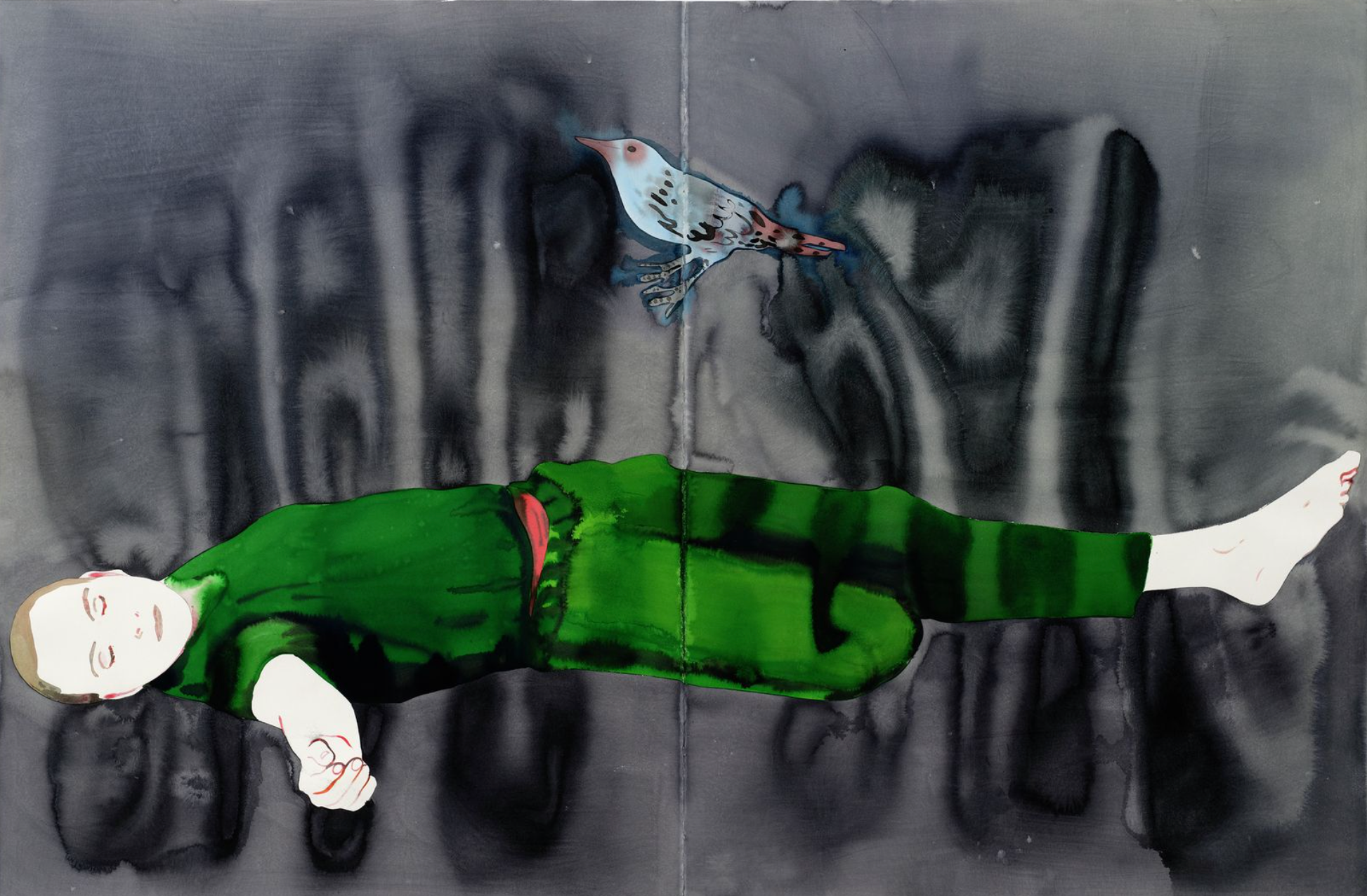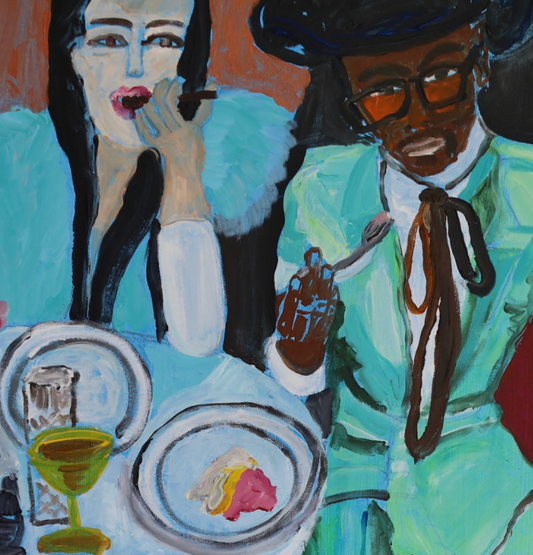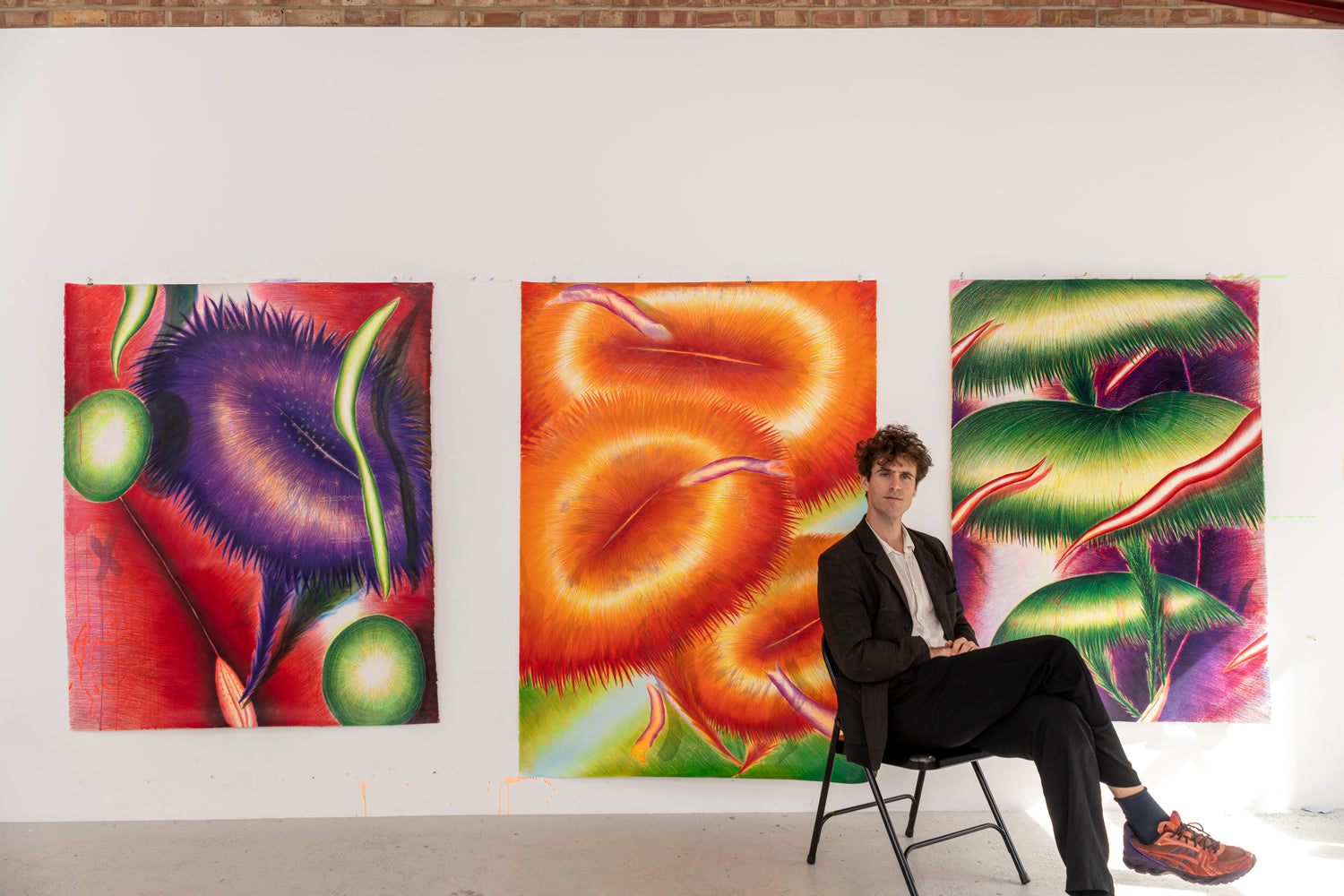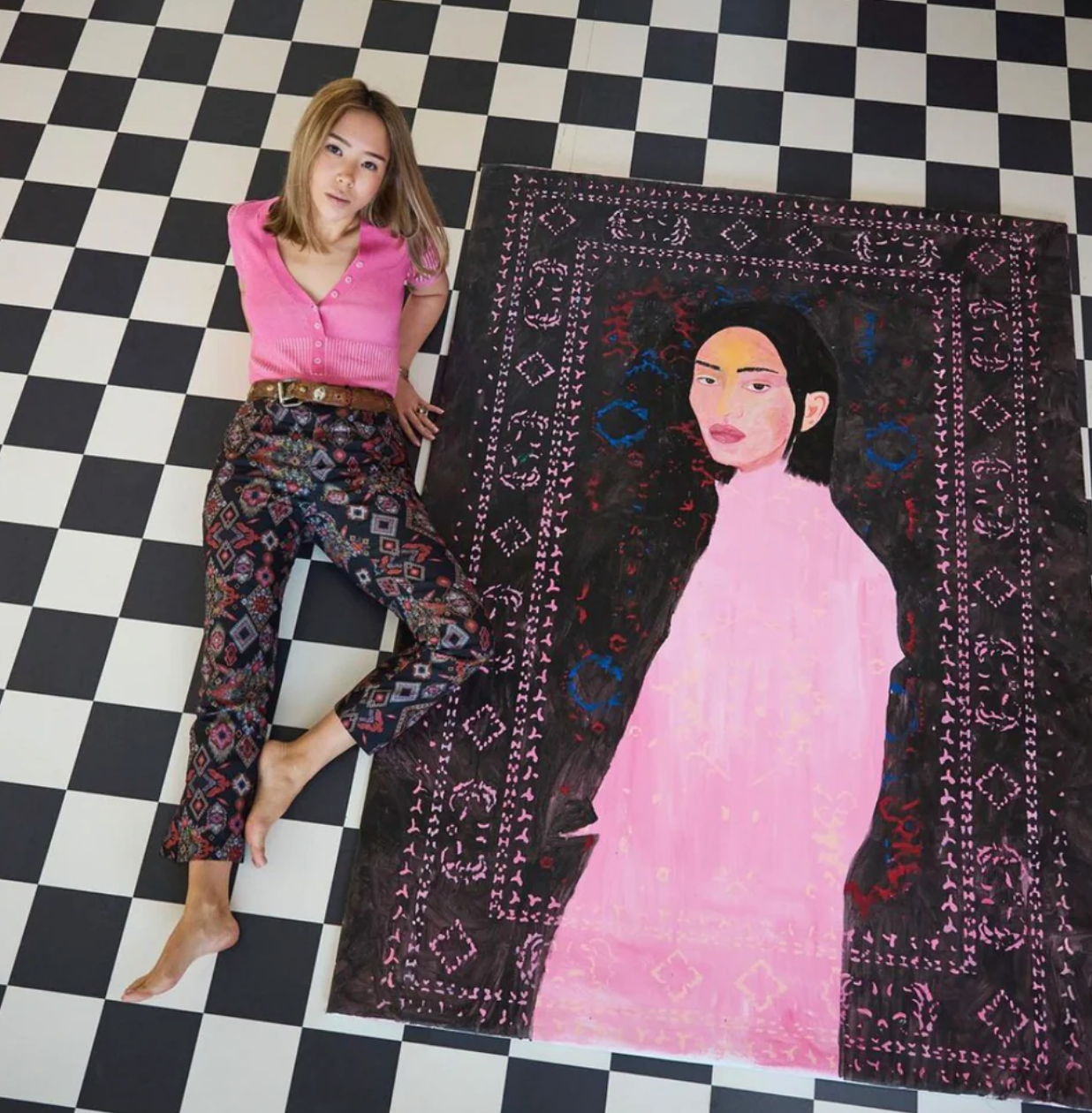-
Q. Tell us about yourself and how you came to be an artist…
-
A. As a child, I enjoyed sculpting, dancing, writing, and drawing. I became a legitimate artist as soon as I stopped trying to put myself in a box. Then, I learned that my father was not my biological father, and I started to question my identity. Painting helped me in this process.
-
Q. Your main character traits ?
-
A. Obsessive, work addict, insomniac.
-
Q. What is your creative process?
-
A. I'm always looking at a lot of pictures and fashion magazines... Photos are just a base to start with, then I make them my own and add some imaginary vocabulary to create my own world.
-
Q. Your favorite color?
-
A. Green. In my studio I am surrounded by trees and birds singing. I had a pink period but it’s over. I love all colors.
-

-
-
Q. Are you experiencing any blocks in your practice right now ?
-
A. No…Every time I am going far away from the studio I come back with a new energy.
"I like to call my work Rock'n Roll romanticism, with young people coming out of a night club, disillusioned, lost, fragile, sometimes arrogant".
-
Le jour après la nuit
Regular price $2,800.00Regular priceUnit price per -
Cupidon et psyché
Regular price $2,800.00Regular priceUnit price per -
Madame rêve
Regular price $2,800.00Regular priceUnit price per
-
Q. Who are some contemporary art figures who have influenced you the most?
-
A. I lived in America for a while and I have been influenced by American painters (De Kooning, Hopper, Philip Guston...) then I came back to France and decided to get back to my europeen roots. I am totally in love with Manet and the Impressionists in general. I like a lot of other painters, Munch, David Hockney, Alice Neel, Françoise Petrovitch...
-
Q. Why do you paint ?
-
A. To feel alive.
-
Q. What you enjoy the most about painting ?
-
A. Knowing that from nothing something can emerge.
-
Q. There is always a narrative at play in your paintings, where do you draw inspiration from?
-
A. I don't need to get on the top of the kilimandjaro to find inspiration. I am more of an introvert interested in the psychology of the characters from her paintings and what they provoke to the viewer.
-
Q. What is your relationship to romanticism ?
-
A. My paintings are a pop nod to the work of the 19th century, which evokes romanticism but which also expresses a tender look at the motives of young people very anchored in a contemporary reality with their attitudes, clothes, haircuts. I like to call my work Rock'n Roll romanticism, with young people coming out of a night club, disillusioned, lost, fragile, sometimes arrogant.
-
Q. If you could have diner with anyone dead or alive?
-
A. Lady Gaga.
-
Q. What makes you laugh?
-
A. I don’t have humor.
-
Q. Your dream of happiness?
-
A. To always be in the pleasure, desire and research of my practice.
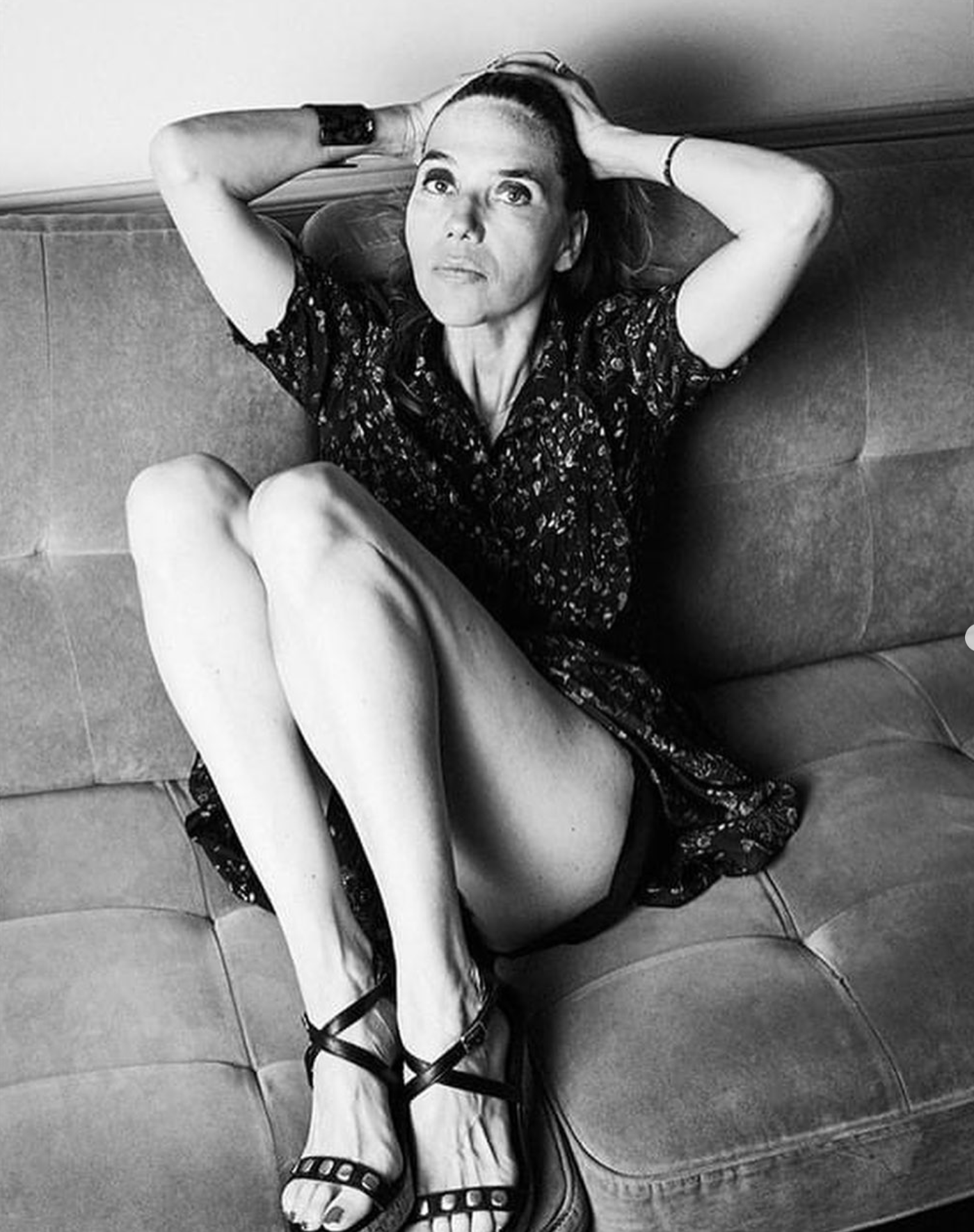
Diner Dress Code

Delphine Perlstein
"My painting is a pop nod to the works of the 19th...

